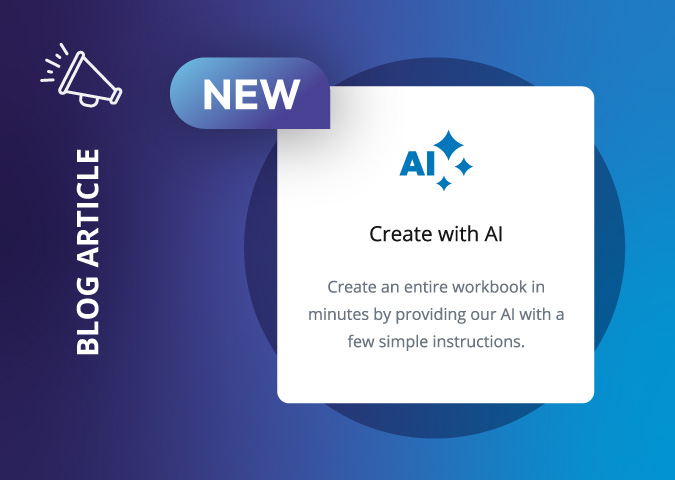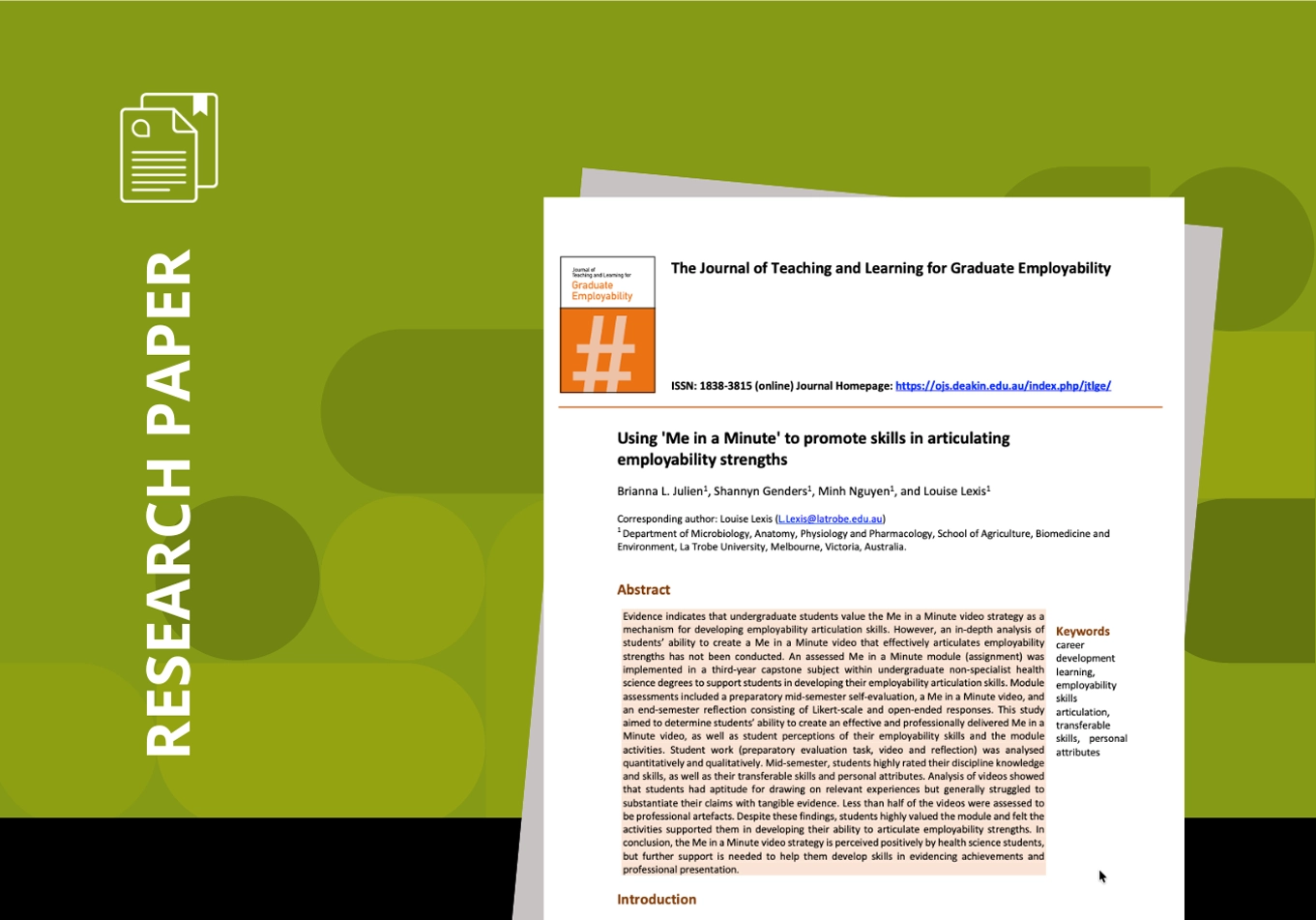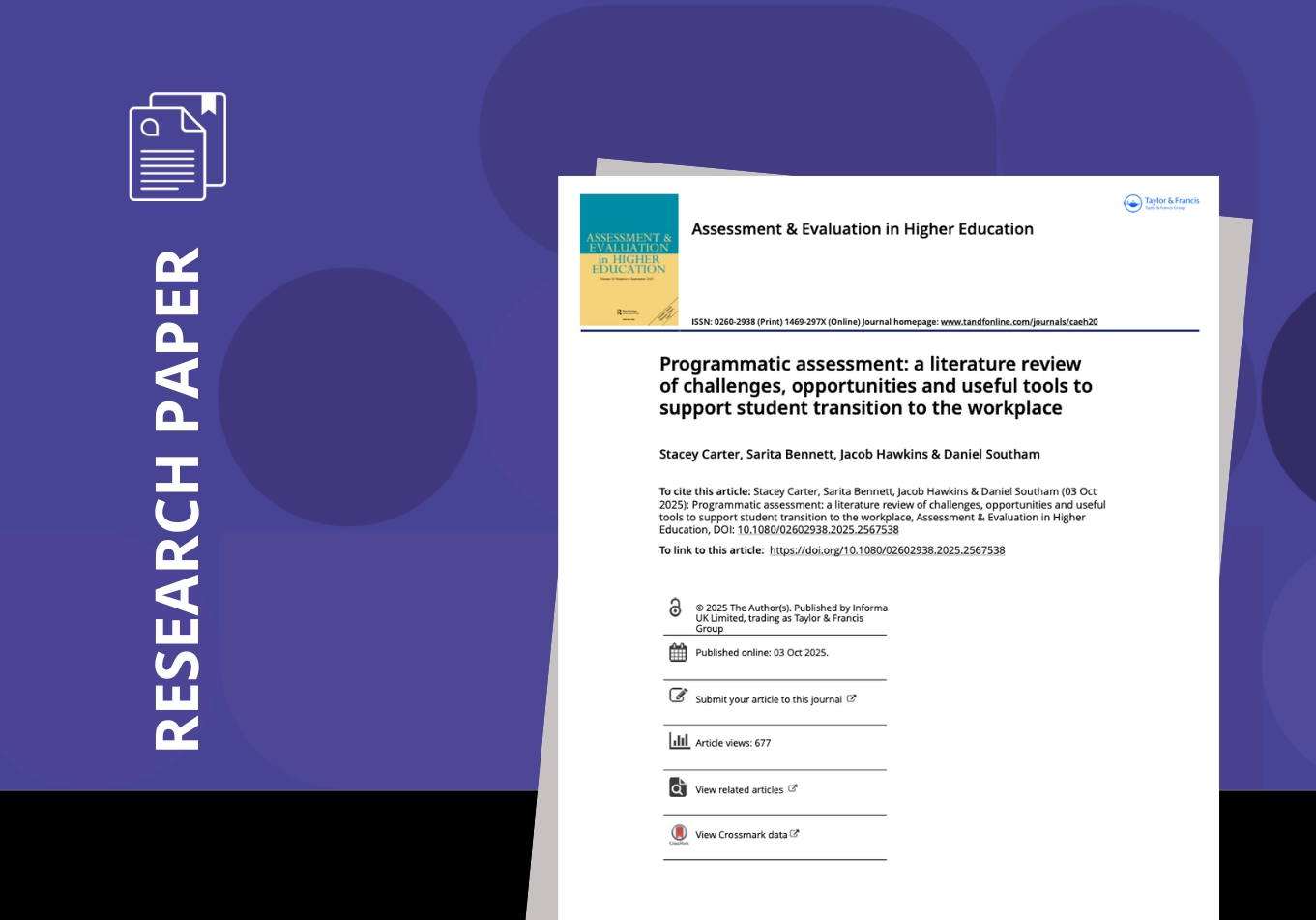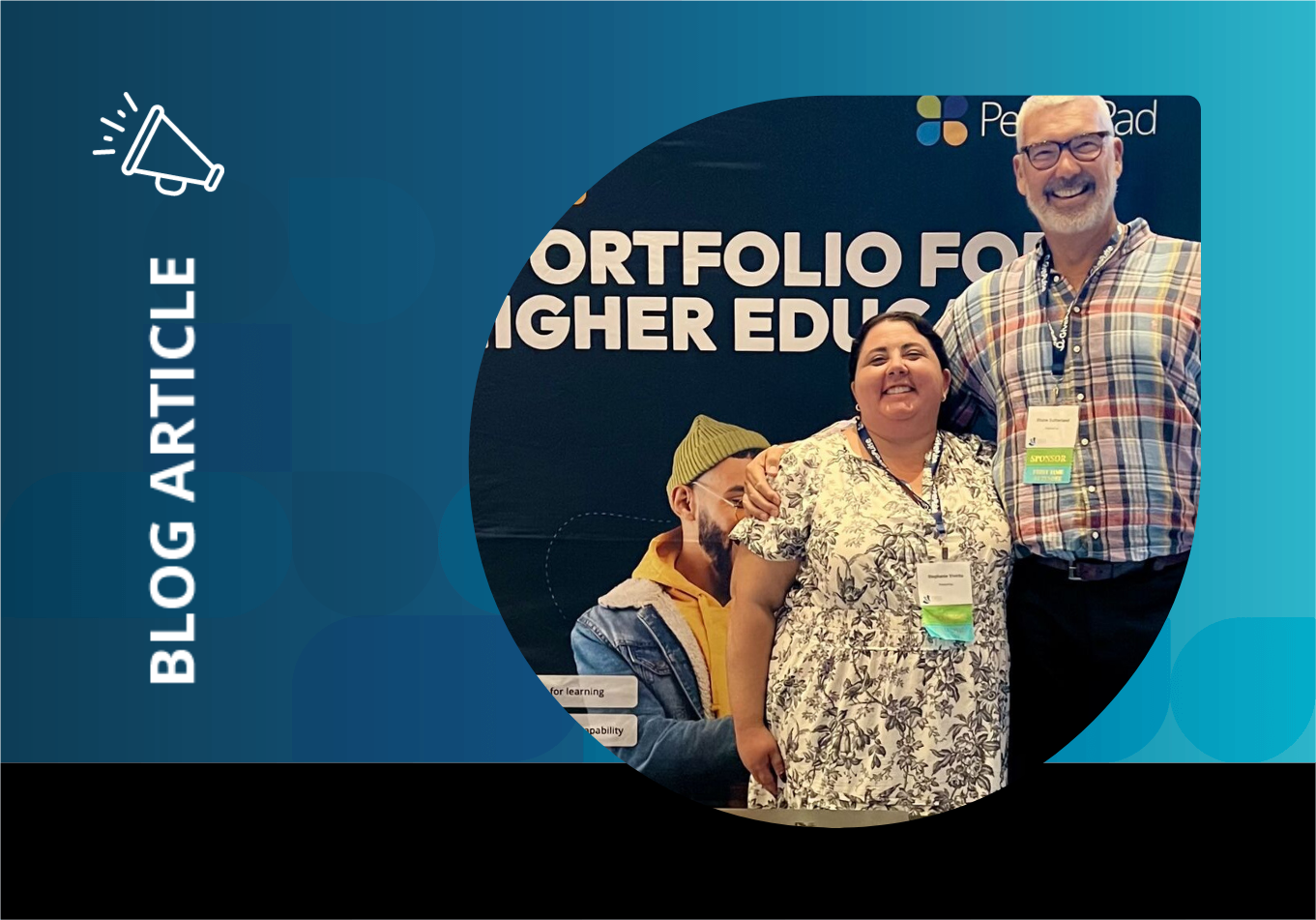Associate Lecturer in Nursing at Charles Darwin University, Ntando Mhlanga, sat down with PebblePad’s Megan Duffy to reveal how she transformed her third-year Nursing Practise Project Unit using ePortfolios to capture students’ self-knowledge and understanding of the nursing specialties.
The unit was designed to be the last theory unit for final year students. It focuses on investigating areas of specialty in nursing, giving the students an opportunity to think about which areas they would like to work in as they develop their nursing careers. Ntando’s decision to adopt PebblePad was driven by a desire to create engaging and authentic assessments using ePortfolios. This approach would enable her final year students to showcase their skills, reflect on their experiences and chart their career paths in a meaningful way.
Crucially, this marked a significant shift from the use of traditional essays that had previously dominated within the unit. “When I took over the unit in 2023, summer semester, I found that [the assessment tasks] were essays of 2,000 words or 1,000 words, and I wanted to try something different and make it more interesting for students,” recalls Ntando.
Ntando’s inspiration for what should replace them came from her own educational experiences. “I had just completed my post grad in clinical education, and the way I was taught and assessed was different – it was engaging, it was fun,” she says. “[So] I was looking for something that the students [could] apply themselves, something that’s practical, and not going to be a chore to get out of the way – so I thought ‘PebblePad’.”
Meeting challenges
In fact, the use of ePortfolios was an obvious choice for Ntando. After all, their role is already hugely important in Nursing as graduates are expected to develop their own ePortfolio to show continuous development because, “in Nursing we’re expected to be lifelong learners, you don’t stop learning, you keep going,” says Ntando.
Another issue that she needed to manage was the increasing use of AI in completing assignments. Ntando found the way in which students used AI in essay submissions not only undermined the learning process but also posed a significant challenge for educators. “[I found that I was coming up against] students using a lot of AI in essay submissions,” recalls Ntando. “It was crazy and stressful for me to mark this kind of work. It was demoralising, and I found that it was just like walking through mud.”
For Ntando, such issues meant ePortfolios represented an innovative and practical solution:
- First, they would promote authentic learning and ensure that students would genuinely engage with the material.
- Second, by reflecting on their clinical experiences and specialty interests, students could create a personalised and valuable resource for their future careers.
- And finally, ePortfolios could help learners discover the area of speciality that best
suited them.
Unpacking ideas
Because of these powerful benefits, Ntando approached learning designer experts Marty Sison and Laura Chiappara Estevez to help her unpack the idea of developing a bespoke ePortfolio design for the unit. A key aim was to ensure students did not, “feel like [using an ePortfolio] was just about ticking all the boxes, putting in all the artefacts,” explains Ntando.
Instead, she wanted to focus on bringing a personal touch to the design by asking students about themselves, their nursing learning journey, how they got started, and where they were going. Crucially, Ntando also knew using ePortfolios was not simply about asking students to think of a skill, equipment or patient presentation for the sake of assessment – but that “this ePortfolio is something they could use after they’ve completed their degrees,” she says.
“[This meant] thinking about other artefacts like transcripts, certificates, work philosophy, career goals, a cover letter, professional memberships, photos, letters of appreciation – the things that will really matter to them,” explains Ntando. “These are things that they can continue to add after they leave [using PebblePad].”
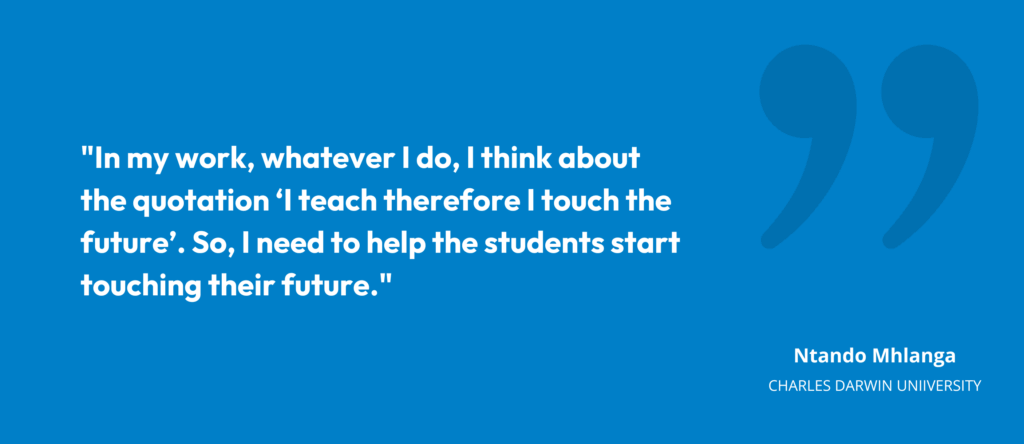
Difficult introductions
After the first design of the assessment was complete , the new ePortfolio approach was introduced to the students. However, it was met with some resistance because of Ntando’s initial and, on hindsight, untargeted approach: “I just put the ePortfolio out there,” she recalls, “but I got reviews from the students [who] were not really impressed [because it] felt like a lot of work, and why should they learn a new technology in their last year?”.
This feedback led to an epiphany for Ntando – that of offering an invitation to learn: “You’ve got to encourage them; you’ve got to woo them in to learning. For the first group I didn’t have [that] invitation to learn.”
It meant for her second attempt, Ntando adopted a different approach: “I invited them, saying that this assessment was for you and told them about the benefits as a head start for your career. This is where you’re going to be uploading all your CPD certificates and ongoing learning; it will help you reflect because in Nursing, that’s an expectation and you can refine that art.”
This change in approach has been transformative with students now understanding the importance of ePortfolios – not just for authentic assessment – but for their career development in the future, too. Ntando recalls: “One of the students emailed me and said, ‘Ntando, how do I have access to PebblePad when I am done with CDU?’. To me, that one email was like, ‘wow, this is exciting!’”.
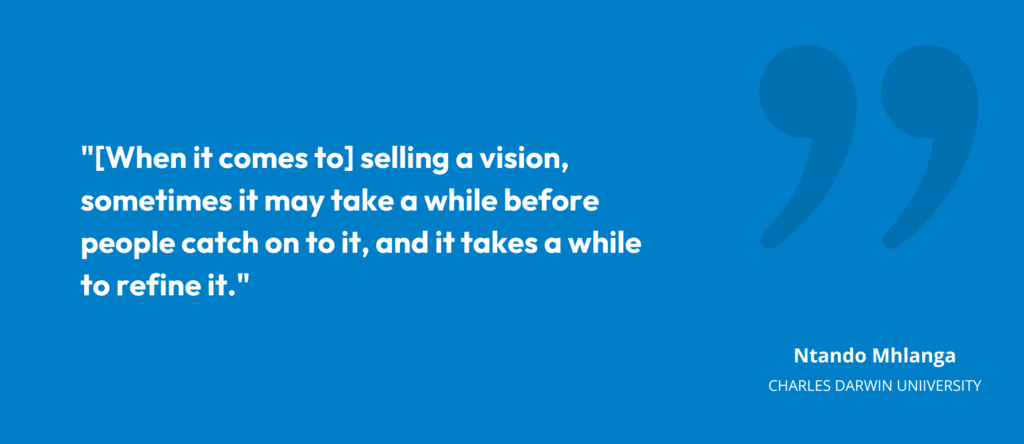
Getting personal
With students now on board, Ntando was able to focus fully on the reasons why ePortfolios were introduced in the first place – to support students’ self-knowledge and understanding. She guided her learners to recognise what they were passionate about, helping them to home in on what specialty resonated with them in their present learning journey and in their future careers.
For instance, when starting out, students are encouraged to bring personal meaning to the ePortfolio – to build it out to reflect on their experience in clinical placement, their knowledge and the nursing attitudes they possess. And most importantly, to make it personal.
“In the ePortfolio, students can include whatever they are comfortable to share,” says Ntando. “In terms of personal stories, some are inspired by loved ones, some who have received care or were looking after others. [They can be creative about the artefacts that they include, but need to think about] why did you choose this artefact? Why is it of interest? Why are you connecting with it?”
When students examine why a particular artefact has meaning to them, Ntando believes it brings a personal insight into who they are and can help them realise what they excel at. She explains: “For some, it is about recognising a skill – for some, they are friendly, they’re empathetic, they’re compassionate, so they may enjoy being in palliative care … it’s those bits and pieces that students can put in the ePortfolio and recognise how they are wired and what skills they already have.”
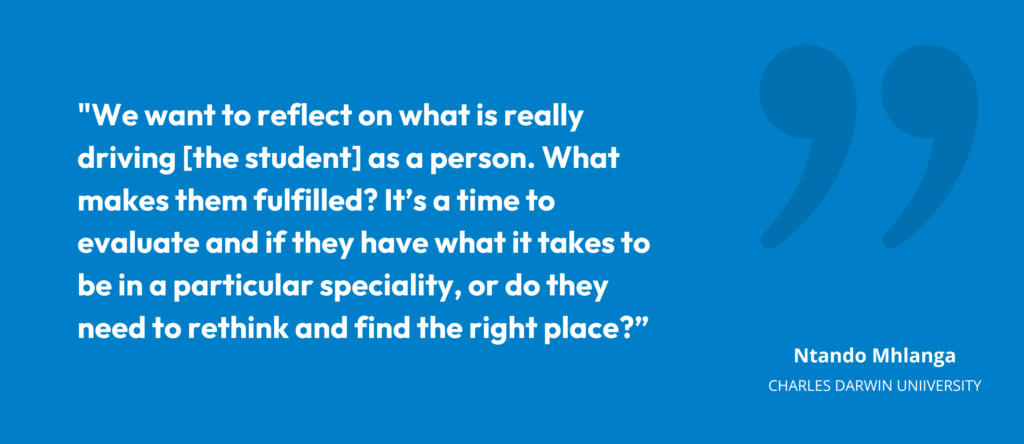
Supporting & surprising
As Ntando continues to refine and enhance her approach, the highly positive impact of ePortfolios on students has been evident – so long as guidance and help is offered. “I had to break it down to give them more [guidance for different artefacts]. I had to guide them [on what to include] … Can they focus on one skill in that specialty to write about? Or one piece of equipment that’s being used in that nursing specialty, like an ECG machine, that really excites them? Or a patient presentation within intervention or a treatment?”.
To help support her students, Ntando now includes suggestions to avoid learners feeling overwhelmed or not knowing where to start: “It’s about having a go to get them used to PebblePad so that they can have the confidence to use it later in their career,” says Ntando.
There has also been an unexpected benefit – the impact of the new approach on markers. It soon became clear to Ntando that they enjoyed marking content within ePortfolios as it’s not the ‘run of the mill’ and importantly, markers were learning as well. Ntando explains: “The markers seem to have enjoyed marking the student’s work because it doesn’t feel like it’s the routine, boring 2000-word essay.
“You see all different kinds of flavours of things and it keeps you excited as the lecturer or the marker. I also learned a lot of things like good diagrams or pictures or samples that I’ll use in my [own] teaching. So [it’s been] enriching for me, too.”
Learning approach
Ultimately, Ntando has created a remarkable learning approach to her authentic assessment practices. Crucially, the shift to ePortfolios for signature assessment also marks a significant step forward for nursing education itself, helping to increase students’ self-knowledge and understanding and identify their unique skills and aptitudes.
Most importantly, the passion Ntando has for Nursing and teaching is abundantly clear – as is her commitment to preparing her students to excel in their careers in the healthcare field. With the support of her university, Ntando has taken a learning approach to her authentic assessment practices and sums it up best: “If you are open minded and willing to learn you are unstoppable.”



